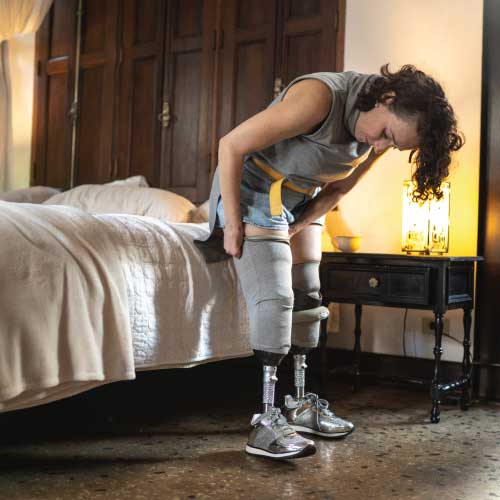New MIT Method Uses Light to Control Muscles, Potentially Solving Prosthesis Issues
Reading Time: 3 minutes
The use of electricity to control muscles has been explored in prosthetics for years, but it has some problems, like rapid muscle fatigue and limited control, which has led to fewer people using it. However, using light to control muscles may offer a solution to these issues.

Researchers at the K. Lisa Yang Center for Bionics at the Massachusetts Institute of Technology (MIT) have shown that it’s possible to control muscles using light in a way that doesn’t lead to fatigue. This discovery could be used in many ways, but it still needs more work before it can be used on people.
Issues with electrical stimulation
Functional electrical stimulation (FES) is often used in neuroprosthetics to help control muscles. It works by putting small electrodes inside the body to send electrical signals to the nerves, which then make the muscles move.
However, this method makes all the muscles contract at the same time, which doesn’t work the way our muscles normally do.
In contrast, in normal muscle function, small groups of muscles are used before larger ones kick in.
In a press release, Hugh Herr, a professor at MIT, said that with FES, the large muscle groups are activated first. This can make it hard to control movements smoothly and leads to muscle fatigue within five to 10 minutes.
How Optogenetics can help
Optogenetics is a biological technique developed between 2004 and 2009 in which researchers use genetic engineering to modify cells so that they produce light-sensitive proteins. These proteins can be activated or deactivated using an external light source, providing researchers with a non-intrusive method to control the cells.
Herr and his team used optogenetics to regulate muscle contraction in mice. They employed genetically modified mice capable of expressing a light-sensitive protein known as channelrhodopsin-2.
To stimulate the cells, the researchers implanted a small light source near the tibial nerve, responsible for lower leg muscle movements. As expected, optogenetic control led to a more gradual increase in muscle contraction.
In an interview with Interesting Engineering, Guillermo Herrera-Arcos, a student who graduated from MIT and participated in the study, emphasized that by adjusting the optical stimulation sent to the nerve, they can control the muscle force in a nearly linear fashion.
This mirrors how our brains control our muscles, making muscle control easier than electrical stimulation.
Vision for the future of prosthetics
The possibility of having light-controlled prosthetics sounds promising, but there are still significant hurdles to overcome before this approach can be applied to humans. Studies have revealed that the light-sensitive proteins used in this technology can induce an immune response in rats, potentially leading to a decrease in muscle size.
In response to this finding, researchers are now focused on developing new light-sensitive proteins and devising delivery methods that do not trigger an immune response.
Herrera-Arcos told Interesting Engineering that the vision for the technology is to create a fully implantable prosthesis that incorporates stimulators and sensors placed in nervous tissue. These components would work together to precisely stimulate paralyzed neuromusculature, guided by closed-loop controllers programmed in implantable processors.











































































